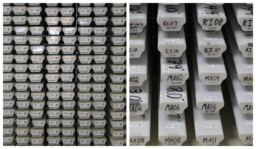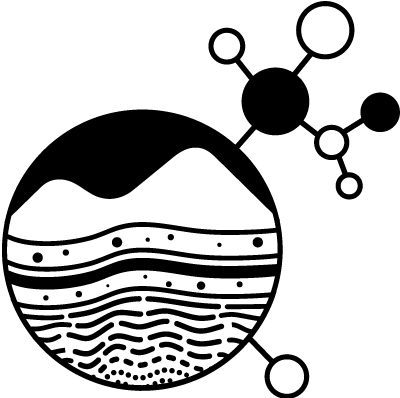Newsletter February 2019, Vol 1
February 2019
This newsletter summarizes new improvements and features in the System for Earth Sample Registration (SESAR²) as well as recent outreach and user highlights. Click on the links below for more detailed information.
Samples Added
Since November 5,011 samples were registered in SESAR². Browse the complete SESAR² catalog with more than 4.3 million samples.
Recent SESAR² Improvements
SESAR² v.7.2.2 was released in November 2018. This new version introduced improved validation and new functionality for the Sub-Object Type and Classification fields and implemented a new version (4.0) of web service schema. See more release notes here.
SESAR² Community
- The SESAR² team attended the AGU Fall Meeting held in Washington D.C from December 10-14, 2018. See more information below about our presentations at AGU, which included presentations about the IGSN and SESAR² and participation in a town hall regarding geochemical data standards. If you were not able to catch up with us at AGU, contact us at info@54.224.199.193 with questions or comments about our resources.
- IGSN: Toward a Mature and Generic Persistent Identifier for Samples: This presentation discussed the evolution of the IGSN and our efforts to redesign and improve its existing organization and technical architecture. Slides from this talk can be found here.
- Increasing the Impact of Your Research by Enabling Persistently FAIR Physical Samples: The System for Earth Sample Registration (SESAR²): This poster discussed the benefits of using IGSNs and SESAR², and how SESAR² has grown beyond individual investigators to include repositories, museums, and many large-scale scientific initiatives.
- Building a Global Network of Geochemical Data: This townhall discussed developing geochemical data standards in the Earth Sciences (and the IGSN as an existing standard that has improved discoverability) and opportunities for a global geochemical data network.
- Dr. Kerstin Lehnert and SESAR² participated in PIDapalooza 2019, a conference dedicated to persistent identifiers (PIDs). Dr. Lehnert gave a presentation titled “Transitioning an Identifier System to Persistence” where she discussed the recent Sloan-funded effort to develop a mature organizational and technical structure for the IGSN that is scalable and extensible to other domains, ensuring persistence.
- SESAR² participated in the annual assembly of members of the International Implementation Organization for the IGSN (IGSN e.V.). The objective of the IGSN e.V. is to implement and promote standard methods for locating, identifying, and citing physical samples with confidence by operating an international IGSN registration service with a distributed infrastructure for use by and benefit to its members. Membership in the IGSN Implementation Organization is open to organizations who wish to run their own IGSN allocating service.
- Join us on twitter @igsn_info!
User Spotlight
- In this edition we spotlight Nichole Anest and the team at the Lamont-Doherty Core Repository. The Lamont-Doherty Core Repository (LDCR) contains one of the world’s most unique and important collections of scientific samples from the deep sea. Sediment cores from every major ocean and sea are archived at the Core Repository, which contains approximately 72,000 meters of core and associated metadata. Besides their mission to provide long-term curation and archiving of samples and cores, the Core Repository also fulfills sample requests, assists investigators in sample collection activities, and works tirelessly to educate teachers, students, and the public about the important role science and the Core Repository play in building a better understanding of Earth processes. We caught up with Nichole to learn more about how the Core Repository uses the IGSN and SESAR² to manage their samples, and to explore some of their exciting sample collections. Read more below:
- Why do you use SESAR²? We use SESAR² because it makes it possible to track samples through time and publications. I get many students requesting samples that someone used in a paper years to decades ago but the information in the paper about the samples is usually limited or non-existent. So, we have to go back through our paper sampling histories to locate the PI, what core(s) and at what intervals they sampled, and try to piece together what samples’ data were used for the published work. The use of IGSNs makes these sort of sample requests much easier as well as giving “automatic” acknowledgement to the repository where the samples came from.
- Sample group highlight: There are about two hundred cores that were taken by the Bureau of Ocean Energy Management (BOEM), part of the US Dept of the Interior, to look for near-shore sand deposits. They wanted to identify where beach sand was transported after major coastal storms (such as Irene and Sandy) and see if it is feasible to use it to replenish the beaches after such storms. Check out the BOEM cores in SESAR² which include core photos as well as grain size data.


